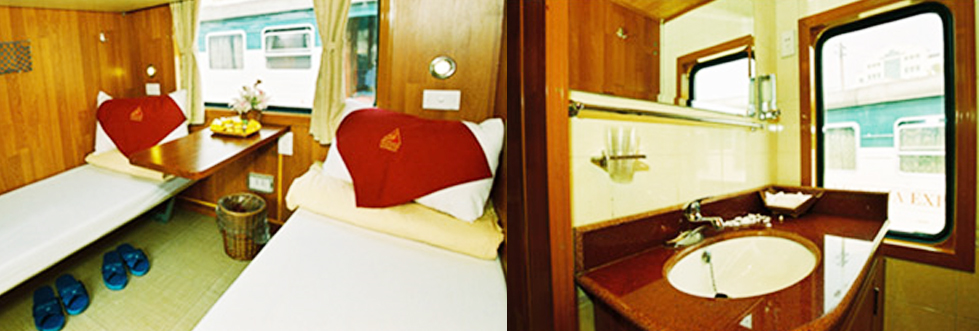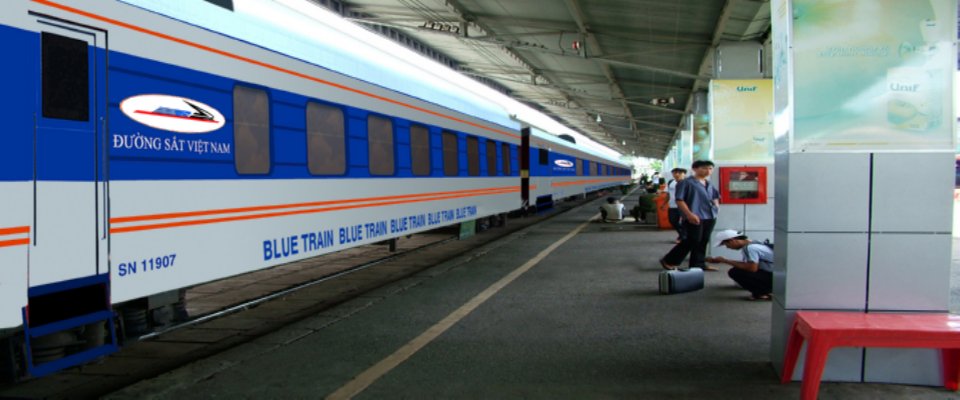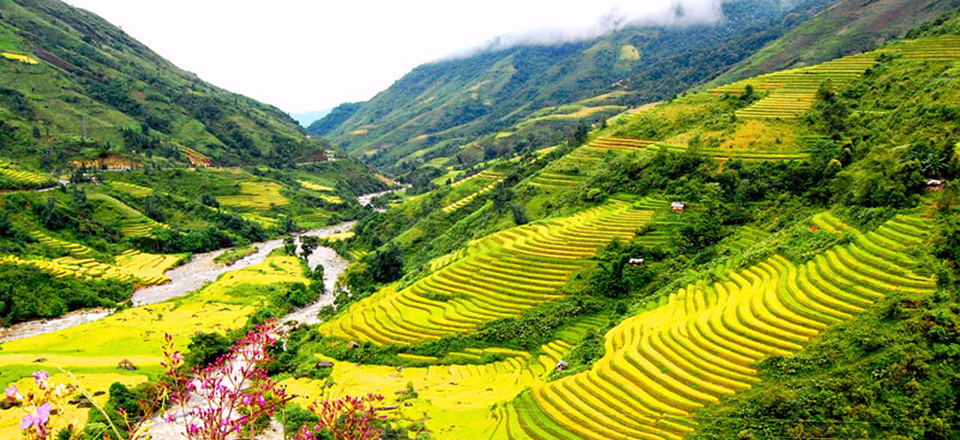Why Facebook CEO Mark Zuckerberg select Vietnam as destination for Christmas vacation
Hanoi:
Most Vietnamese and Westerners are familiar with the phrase" Ha Noi ba muoi sau
Pho Phuong" or " Ha Noi 36 districts". This phrase often causes much confusion
for most people since, on the one hand Pho means a street or a place for
merchants to gather to do business, on the other hand Phuong means a district or
a guild of artisans specializing in a particular trade (phuong cheo, phuong tho,
etc.). In any case, there is some truth to the use of both descriptions. Similar
to the Guilded age of Europe, Ha Noi's 36 districts is Vietnam's version of the
guild concept. Long ago, as artisans moved to the capital city to do business,
they gathered together in an area as a way to share resources. As a result, many
of the streets are named after the crafts that were sold on that street. Pho
Hang Bun (Vermicelli), Pho Hang Ma (paper product), Pho Hang Bac (Jewelry) are a
few of the streets carrying the name of the products sold on the street.
Today, the 36 pho or old district remains in Vietnamese literature as a quaint
and familiar description of this part of Ha Noi. Although many of the streets no
longer have the products for which they were named, some still do. Today, on
many of the streets, there are still shrines dedicated to the individual diety
of the trades for which the streets are named ba muoi sau Pho Phuong or Ha Noi
36 districts. This phrase often causes much confusion for most people since, on
the one hand Pho means a street or a place for merchants to gather to do
business, on the other hand Phuong means a district or a guild of artisans
specializing in a particular trade (phuong cheo, phuong tho, etc.). In any case,
there is some truth to the use of both descriptions. Similar to the Guilded age
of Europe, Ha Noi's 36 districts is Vietnam's version of the guild concept.
Long ago, as artisans moved to the capital city to do business, they gathered
together in an area as a way to share resources. As a result, many of the
streets are named after the crafts that were sold on that street. Pho Hang Bun
(Vermicelli), Pho Hang Ma (paper product), Pho Hang Bac (Jewelry) are a few of
the streets carrying the name of the products sold on the street. Today, the 36
pho or old district remains in Vietnamese literature as a quaint and familiar
description of this part of Ha Noi. Although many of the streets no longer have
the products for which they were named, some still do. Today, on many of the
streets, there are still shrines dedicated to the individual diety of the trades
for which the streets.
Most Vietnamese and Westerners are familiar with the phrase Ha Noi ba muoi sau
Pho Phuong or Ha Noi 36 districts. This phrase often causes much confusion for
most people since, on the one hand Pho means a street or a place for merchants
to gather to do business, on the other hand Phuong means a district or a guild
of artisans specializing in a particular trade (phuong cheo, phuong tho, etc.).
In any case, there is some truth to the use of both descriptions.
Similar to the Guilded age of Europe, Ha Noi's 36 districts is Vietnam's version
of the guild concept. Long ago, as artisans moved to the capital city to do
business, they gathered together in an area as a way to share resources.
As a result, many of the streets are named after the crafts that were sold on
that street. Pho Hang Bun (Vermicelli), Pho Hang Ma (paper product), Pho Hang
Bac (Jewelry) are a few of the streets carrying the name of the products sold on
the street.
Today, the 36 pho or old district remains in Vietnamese literature as a quaint
and familiar description of this part of Ha Noi. Although many of the streets no
longer have the products for which they were named, some still do. Today, on
many of the streets, there are still shrines dedicated to the individual diety
of the trades for which the streets are named ba muoi sau Pho Phuong or Ha Noi
36 districts. This phrase often causes much confusion for most people since, on
the one hand Pho means a street or a place for merchants to gather to do
business, on the other hand Phuong means a district or a guild of artisans
specializing in a particular trade (phuong cheo, phuong tho, etc.). In any case,
there is some truth to the use of both descriptions.
Similar to the Guilded age of Europe, Ha Noi's 36 districts is Vietnam's version
of the guild concept. Long ago, as artisans moved to the capital city to do
business, they gathered together in an area as a way to share resources.
As a result, many of the streets are named after the crafts that were sold on
that street. Pho Hang Bun (Vermicelli), Pho Hang Ma (paper product), Pho Hang
Bac (Jewelry) are a few of the streets carrying the name of the products sold on
the street.
Today, the 36 pho or old district remains in Vietnamese literature as a quaint
and familiar description of this part of Ha Noi. Although many of the streets no
longer have the products for which they were named, some still do. Today, on
many of the streets, there are still shrines dedicated to the individual diety
of the trades for which the streets.
Halong:
Halong Bay attracts approximately 95% of the tourists who come to Vietnam. It's
a beautiful bay Halong Baymprising 1,553 square km situate on the Gulf of Tonkin
Gulf on the Eastern Sea. Though it forms part of the ocean, its waters are calm
and unusually emerald. It has nearly 2,000 islands. The enchanting land masse of
the Bay is of limestone and dolomite, and there are many grottos and caves for
visitors to enjoy. Tourist who have visited Guilin (China) and Phuket (Thailand)
often compare these sites with Halong Bay due to their similar shape and
geographical structure. However, upon visiting this Vietnamese wonder, all agree
that Halong Bay is much larger and more diversified. It is so magnificent, that
after a very short period of consideration, UNESCO acknowledged Halong Bay as a
World Heritage site in December 1994. This is the 2nd of the four listed World
Heritages of Vietnam.
In 1991 a scene of the French movie INDOCHINE was shot at Halong Bay. This very
popular film is about the life of a French woman who lived in Vietnam during the
French domination in Indochina from mid-19th to mid-20th century. The leading
role is played by Catherine Deneuve and Vicent Perez. As the film made its way
around the world, not only French along bay-speaking tourists began to make the
voyage to Halong Bay, but the world now includes this spectacular seascape on
its itinerary.
Before it became so popular, it was pretty difficult to get to Halong Bay from
Hanoi, 170 km away. In 1995, it took no less than 6-hours of driving with 2
river ferry crossings, with inconvenient getting in and out of busses. But
still, despite this inconvenience, tourists always included Halong Bay as part
of their itineraries.
Today, you can drive directly to Halong Bay without the need to take any ferries
and in three hours or even less if the traffic is not too heavy. But tourists
love to stop along the way to look at the paddy fields, the daily life of
farmers, the clay workmen, the green bean town and the ceramic town that are now
situate on the way. There is a saying amongst Vietnamese about Halong Bay: "You
have never really been to Vietnam if you have not visited Halong Bay." How true!
Sapa :
Characteristics: Sapa is a beautiful and romantic resort town. At the height of
1, 600m above sea level, the average temperature of the area is 15-18°C. It is
cool in summer and cold in winter.
Visitor to Sapa in summer can feel the climate of four seasons in one day. In
the morning and afternoon, it is cool like the weather of spring and autumn. At
noon, it is as sunny and cloudless as the weather of summer. And it is cold in
the evening. With no advance warning of a thunderstorm short and heavy rains may
come at noon on any summer day. Subsequently, a rainbow appears, transforming
Sapa into a magic land, which for years has been a constant source of poetic
inspiration, lights up the whole region. The best time to witness the scenic
beauty of Sapa is in April and May. Before that period, the weather might be
cold and foggy; after that period is the rainy season. In April and May, Sapa is
blooming with flowers and green pastures. The clouds that settle in the valley
in early morning quickly disappear into thin air.
Sapa has many natural sites such as Ham Rong Mountain, Silver Waterfall, Rattan
Bridge, Bamboo Forest and Ta Phin Cave. Sapa is also the starting point for many
climbers and scientists who want to reach the top of Fansipan Mountain, the
highest mountain in Vietnam at 3, 143m. Hoang Lien Mountain Range is also called
the Alps of the North Sea area since Fansipan Mountain is not only the highest
peak in Vietnam, but also in the Indochina Peninsula. The pyramid-shaped
mountain is covered with clouds all year round and temperatures often drop below
zero, especially at high elevations.
The first thing you notice when approaching the resort town are some detached
wooden mansions and villas perched on a hill top or hillside, behind thick pine
forests and almost invisible on this foggy morning. Old and new villas with red
roofs now appear and now disappear in the green rows of pomu trees, bringing the
town the beauty of European towns.
Fresh and cool air in Sapa is an idea climate condition for growing temperate
vegetables such as cabbage, chayote, precious medicinal herbs, and fruit trees
such as plum, pear…
Sapa is home to various families of flowers of captivating colors, which can be
found nowhere else in the country. When Tet, the Lunar New Year Festival, comes,
the whole township of Sapa is filled with the pink color of peach blossom
brought from the vast forests of peach just outside the town. Sapa is regarded
as the kingdom of orchids. Here, orchid lovers are even amazed by the choice,
when trekking in the forest filled with several hundred kinds of orchids of
brilliant colors and fantastic shapes, such as Orchid Princess, Orchid of My
Fair Lady's Shoe. Some orchids are named after lovely singing birds such as the
canary, slanginess nest, and more.
Sapa is most beautiful in spring. Apricot, plum and cherry flowers are
splendidly beautiful. Markets are crowded and merry, and are especially
attractive to visitors. Minority groups come here to exchange and trade goods
and products. Market sessions are also a chance for locals to promenade and
young men and women in colorful costumes to meet, date or seek sweethearts.
Visitors to Sapa will have opportunities to discover the unique customs of the
local residents
Sapa Budget Tours
- Sapa Day Tours - Sapa Day Excursions - Day Trips Sapa Vietnam
- Sapa Walk and Bac ha Market
- Sapa Hard Trekking Two
- Sapa Hard Trekking One
- Sapa Medium Trek Two
- Sapa Medium Trek
Sapa Trekking and Adventures
- Fansipan peak conquering VIP tour (3 days - 2 nights)
- Fansipan peak conquering VIP tour (2 days - 1 nights)
- Fansipan peak conquering Deluxe tour (4 days - 3 nights)
- Fansipan peak conquering Deluxe tour (3 days - 2 nights)
- Fansipan peak conquering Deluxe tour (2 days - 1 nights)
- Fansipan peak conquering Standard tour (4 days - 3 nights)
Sapa Cycling Options
- Sapa - Binh Lu - Lai Chau(with biking)
- Sapa - Lao Chai - Ta Van - Ban Ho
- Sapa Biking Tour - Ban Ho Village
- Sapa Biking Tour - Binh Lu - Lai Chau
- SaPa - Bac Ha Market with biking
- Pedalling The Remote Sapa\'s Northwest
Sapa Luxury Holidays
Traditional Minority Discovery Packages
- Green Sapa bus (Hanoi – Sapa)
- Eco Sapa Limousine Van (Hanoi – Sapa)
- Private car Hanoi Sapa
- Hanoi Sapa Private Cabin bus
- Coc Ly market with boat trip
- Cao Son market -boat trip on Chay river- Sapa Tours
Sapa Classic Trips
Northern Mountain Discovery Packages
Topas Ecolodge Sapa tours
- Topas Ecolodge and Market Package 3D/4N
- Topas Ecolodge and Market Package-2D/3N
- Topas Ecolodge and Victoria Sapa Package – 4D/5N
- Topas Ecolodge and Victoria Sapa Package – 3D/4N
- Topas Ecolodge Package – 3D/4N
- Topas Ecolodge Package 2D/3N











